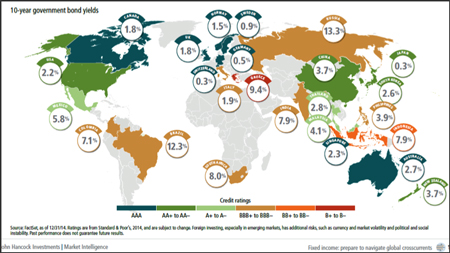When I was just starting out in the investment business, one of my mentors said over and over, “Accumulation of wealth is about time, not timing.” If you start early and invest appropriately, you don’t need to try to time the market. Timing the market is a fool’s game and leads to many troubling mistakes. Most people, even the pros, can’t time the market correctly with a high percentage of success.
The chart below from Fidelity is a simple but dramatic example of accumulating greater wealth by starting early.
The “Leave it Alone” Approach
There are more steps to starting early. They begin with understanding your risk tolerance and then sticking to it by finding the appropriate portfolio allocation.
Next, set up a dollar-cost-averaging monthly investing discipline in your 401k or IRA program. And leave it alone! Obviously, if your employer matches your contributions to a 401k plan, than max that out before any other type of investment program. A match is the same as free money that will help to build a nest egg. Why not let someone contribute along with you?
Unbelievably over 30% of participants don’t contribute to their employer plans and miss the match.
This suggestion sounds simple but there will be periods of your life when time seems slow and dull and your investments are not making the headway you expect. People around you are getting wealthier it seems. You start to think maybe you should be more aggressive. You will be tempted to change stride and do something different to keep up with crowd. Don’t mix brains with a bull market! Occasionally individual markets (like the S&P last year) will trounce a diversified portfolio. This temporary outperformance by one asset class generally will not persist for more than a year or two.
Tips for Staying the Course
There may be other periods when the economy or financial markets seem to be falling apart and you cannot believe the extent of losses in markets and even your portfolio. When you feel regret and loss, it may not seem easy to stay the course.
My advice, when the pain threshold becomes overwhelming at first breathe and then consider doing the opposite of what your stomach is telling you.
This is when your brain needs to take over. If you are sad because of losses and feel the need to change direction because, consider buying a little more. When it’s so exciting that you are looking at your portfolio value every day and twice on Saturdays (BTW prices don’t change on Saturdays), slow down your purchases or be slightly more conservative. It’s not always easy to ignore your gut, but historically starting early and staying the course is the advice I give my clients every day.
Matthew E. Chope, CFP ® is a Partner and Financial Planner at Center for Financial Planning, Inc. Matt has been quoted in various investment professional newspapers and magazines. He is active in the community and his profession and helps local corporations and nonprofits in the areas of strategic planning and money and business management decisions.
This material is being provided for information purposes only and is not a complete description, nor is it a recommendation. Any opinions are those of Center for Financial Planning, Inc. and not necessarily those of Raymond James. The information has been obtained from sources considered to be reliable, but Raymond James does not guarantee that the foregoing material is accurate or complete. Investing involves risk and investors may incur a profit or loss.











